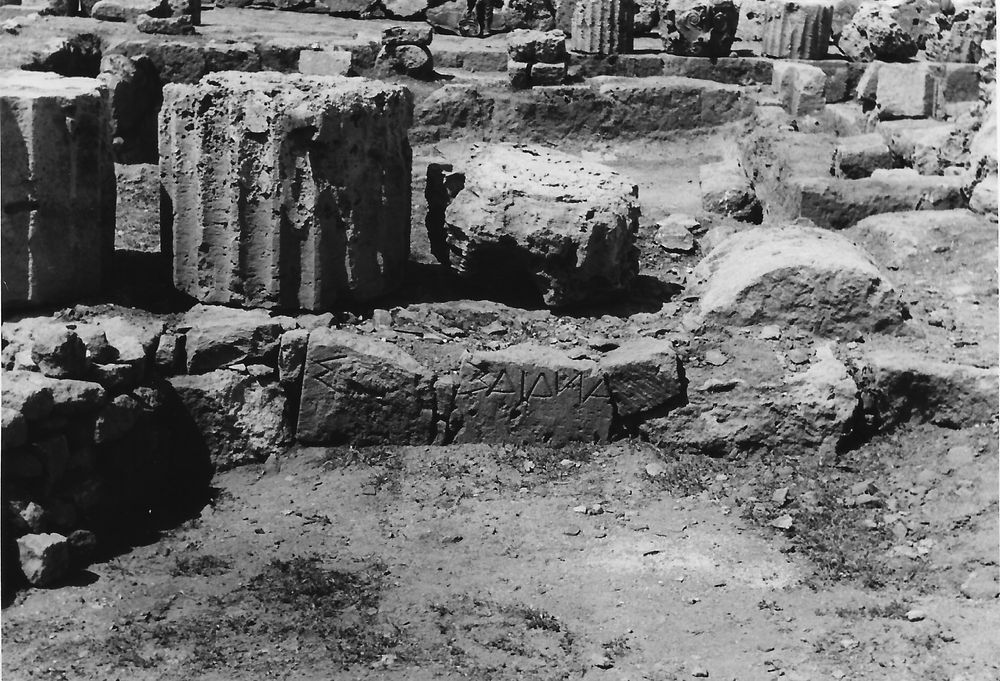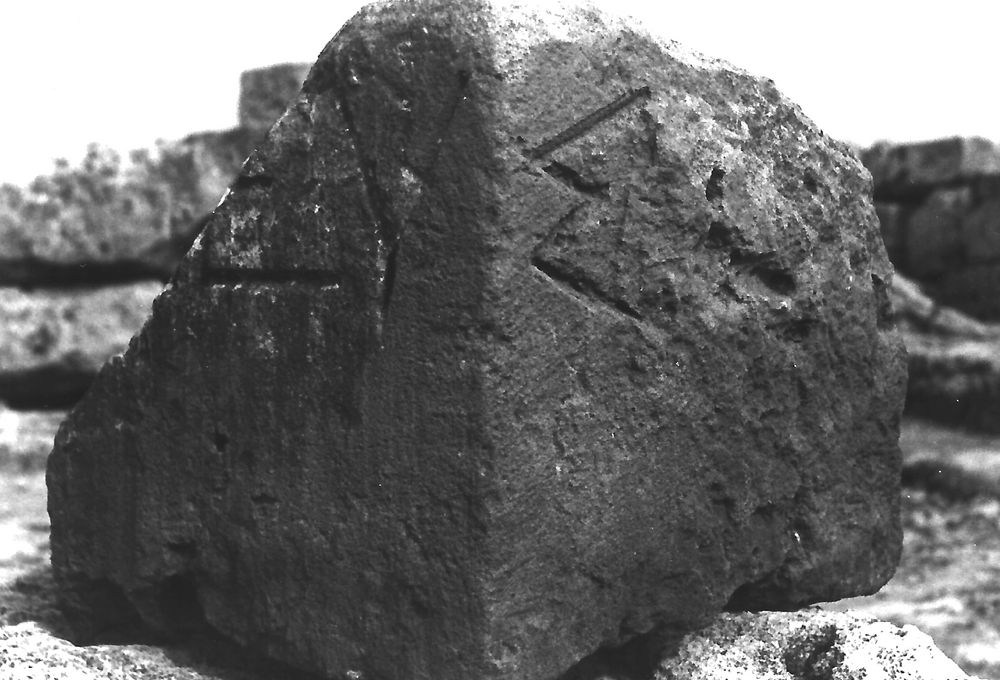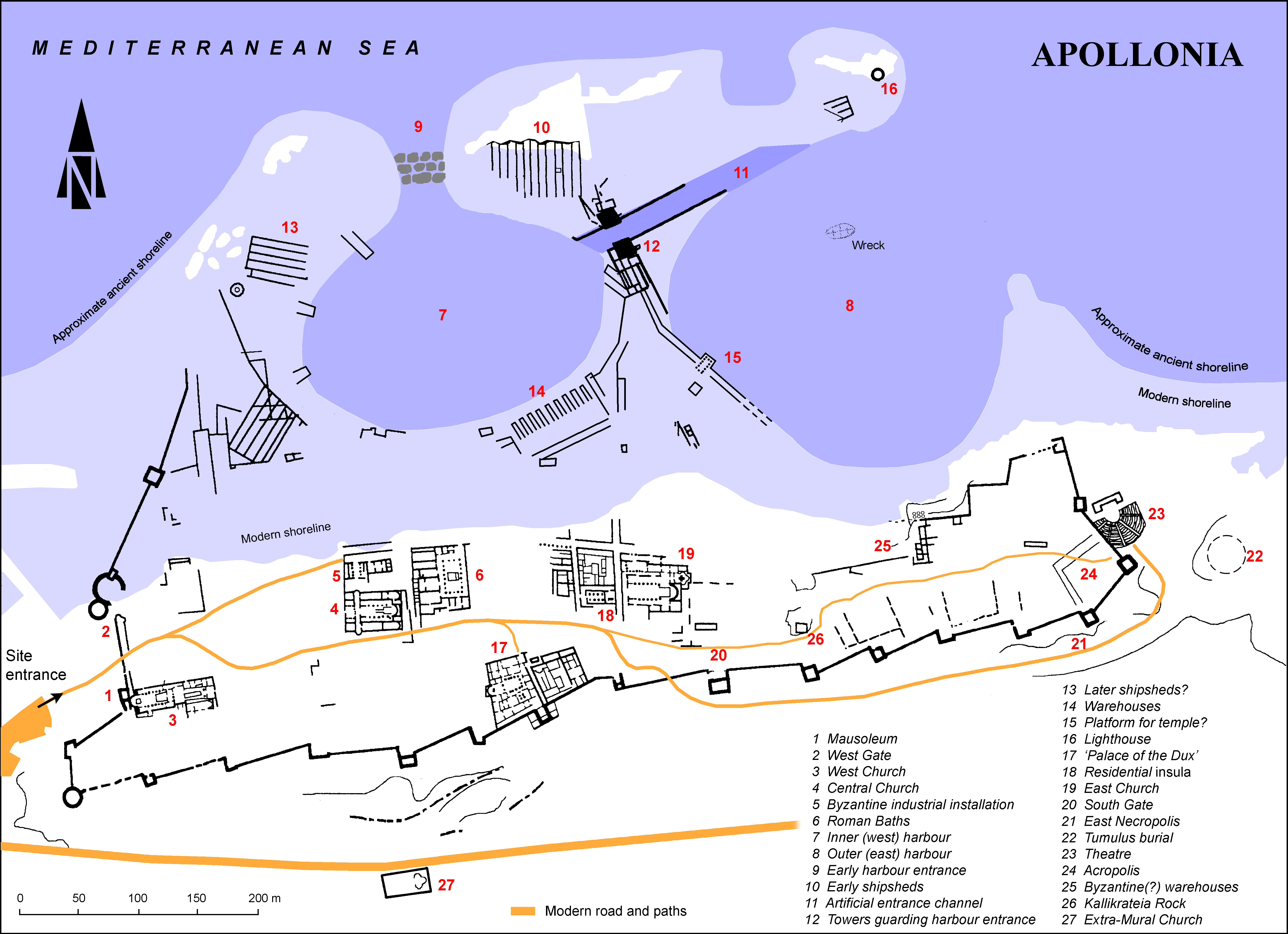EpiDoc XML:
IGCyr0626002
Trismegistos ID:
738330
Source description
Support: Two fragments of a large limestone altar (fragment a broken off at right and back: w: 0.49 × h: 0.335 × d: 0.28; fragment b broken at left and back: w: 0.315 × h: 0.335 × d: 0.39); the upper side has a shallow depression, leaving on all preserved sides a margin 0.05 wide.
Layout: Inscribed just under the upper edge: the letters on fragment b run across the angle on the next side to its right; the same is possible, but not sure for fragment a.
Letters: 0.1-0.11; very low bar of alpha, asymetric nu, slanting sigma, very short tail of upsilon.
Date: Second half of fifth century BC (lettering).
Findspot: Found on April 22nd, 1955 by Montet's Mission in the Port of Cyrene, later Apollonia ➚: reused in Roman Baths, in the Eastern stylobatus.
Place of origin: Findspot.
Last recorded location: Apollonia Museum, inv. number unknown. Seen by C. Dobias-Lalou in 1976 and later on at Sūsah: Apollonia Museum.
Text constituted from: Transcription from stone (CDL).
Bibliography
Chamoux 1958, pp. 581-584, figs. 4-6, whence SEG, 17.816; Robert, BE, 1960.439, whence SEG, 18.757; Reynolds 1976, n. 39, whence SEG, 27.1125bis; Chevrollier 2018-2019, pp. 73-74, whence SEG 68.1742; IGCyr 062600 ➚; Dobias-Lalou 2020, pp. 68-70 and fig. 6-7.
Text
Apparatus
b.i: [Ἡρακλ?]εῦς Chamoux 1958 or rather [Ἄρ]ευς Chamoux 1958, IGCyr; [---]ευς Reynolds 1976
French translation
(scil. Autel) d'Athéna.
(scil. Autel) [d'Hérak?]lès.
English translation
(scil. Altar) of Athena.
(scil. Altar) [of Herak?]les.
Italian translation
(scil. Altare) di Atena.
(scil. Altare) [ di Erac?]le.
Commentary
The arrangement of the two fragments is not easy to determine, although on the photograph taken during the excavation they might seem to be nearly adjacent, so that one might imagine that the break occurred during the phase of re-use. Chamoux was very clear about the fact that they were not adjacent. Side i of b might thus belong either to the right of side a or to its opposite side. See a tentative reconstruction at Dobias-Lalou 2020, fig. 7.
At Cyrene we have another altar (IGCyr1033102 and IGCyr1033152) bearing the names of two deities inscribed on two different sides. However in that case, one inscription was later than the first one. On the contrary, the present altar seems to have been erected at once for both divinities.
The god whose name stood at b is not quite clear. Chamoux preferred to restore Ares' name on behalf of his being worshipped under name Enyalios in GVCyr0222. The latter was found in a late building of the Eastern part of the town. However, as both stones were re-used, it is quite possible that they once stood nearer to one another, in a cultic area that would be common with Athena. On the other hand, Chamoux also mentioned the possibility that the god's name on the altar was Heracles and J. Reynolds found it a good option, so that she left the question open. Chevrollier has a slight preference for Ares. In fact, Heracles was worshipped at Cyrene on an altar common with Hekate, Hygieia and Panakeia, for his curative virtues (IGCyr0223002). Moreover, in the harbour (Apollonia), a votive club was found during the Montet excavations in 1954 but never published. It might attest Heracles' cult also on the spot. See now further arguments in favour of Herakles developed by Dobias-Lalou 2020 on behalf of the epigraphical display.
CC BY-NC-SA 4.0 Deed Attribution-NonCommercial-ShareAlike 4.0 International License.
All citation, reuse or distribution of this work must contain a link back to DOI: https://doi.org/10.60760/unibo/igcyrgvcyr2 and the filename (IGCyr000000 or GVCyr000), as well as the year of consultation.



